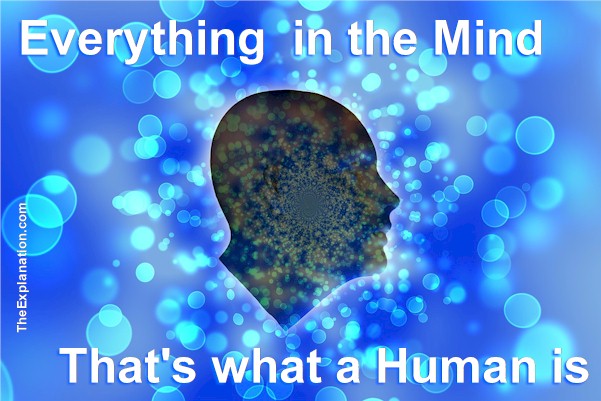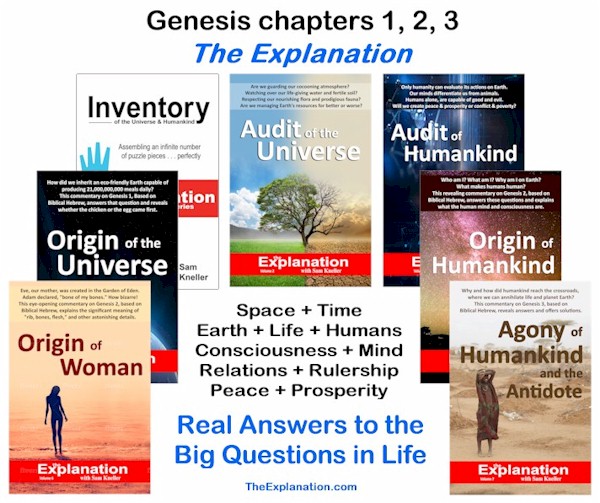Contents
In the Mind, whether we realize it or not, each of us is being affected by the perverted violence and sex that is so readily accessible.

In the mind reside all your experiences, ideas, memories, motivations, emotions and feelings. It identifies you as an individual.
In the mind resides everything that each human being has accumulated throughout their lifetime. All their experiences, ideas, memories, motivations, emotions and feelings. The mind not only summaries what a human being is, it also identifies each of us as an individual.
(Audit of the Universe, chapter 9.3)
Last week we discussed mental health and illnesses for which we can create and analyse statistics. Problems that directly affect the mind. Today we are going to go a step further into an area that is more controversial where there are no statistics, where there’s a lot of debate and disagreement: The influence of ‘nurture on the mind.’ What I mean by nurture is the social environment each of us is bathed in.
In the #mind resides everything that each of us has accumulated throughout their lifetime. All our experiences, ideas, memories and emotions. The mind summaries what a human being is and identifies each of us as an individual. Share on XWhat are some of the very open and readily available practices in society that have an impact on our minds: Violence (this is not just murders, it goes all the way from verbal abuse to harassment to violent cartoons and movies), sex, drugs. I know that as soon as I write ‘violent cartoons’ some may think I’m old school. Listen to what the American Academy of Pediatrics has to say, “Extensive research evidence indicates that media violence can contribute to aggressive behavior, desensitization to violence, nightmares, and fear of being harmed.”
We are talking about the invisible impact of common practices our minds are all exposed to, day-in, day-out. Nowadays, you almost have to be a hermit to avoid the stream of news and especially vivid images hitting us via smartphone, TV, Twitter, FB, Instagram… The movie rating systems are very permeable as to what can be seen by under 10-13’s.
The last 2 and next 2 blog posts focus specifically on the mind. What it is and the role it plays in human beings. I remind you that I wrote the mind is THE most important element possessed by each of us. In theory if you owned something very expensive and precious, like a jewel, house or car, you’d want to pay extra attention to taking care of and protecting it.
One would think the same principle should apply to your mind, all of our minds. Are we doing this? Is society assuming its role in doing this? Is the half-filled glass getting emptier or fuller when it comes to caring for our minds? What follows is intended for one purpose only: To measure the influence that affects the state of our minds
Shoot ‘Em Up: Violent Video Games
In Newtown, Connecticut, USA, and Kauhajoki, Finland, an ocean apart, horrific scenes unfold before our eyes on the world stage, scenes of violence: schoolchildren and teachers shot to death in an American elementary school, and college students murdered in a Finnish vocational college. As police investigate the separate respective crimes, gunmen Adam Lanza and Matti Saari (who was friends with another mass shooter) have a common link: they both played violent video games in the months and years leading up to their rampages. Another violent offender (Devin Jones) who also plays video games tells police without emotion that “life is like a video game.”
Matti Saari played the online virtual war multiplayer game “Battlefield 2,” while Adam Lanza preferred Call of Duty, a first-person and third-person ‘shooter’ game. Since the introduction of “Mortal Kombat,” which features a martial arts expert demolishing his opponent, chopping a body in half and releasing a fountain of blood where the torso used to be (the video game cheerfully announces, “Fatality”, and in a later fight with a female opponent, “Finish Her”), all of these games, available for purchase and download and on Internet platforms, have a worldwide reach–and even more pertinent personal reach into the mind.
Obviously, there are more ‘positive’ games such as Lumosity.com, which uses proven neuroscience and learning methods to offer shape-matching, name-remembering, space-junk-clearing games that do contribute to healthier, more active brain function and increase brain plasticity. Some people can actually find meaning in video games—take the example of a 72-year-old man in England who, after the death of his wife and other horrible losses, begins playing an interactive game about aliens and recovers the will to live. It can be said that this 72-year-old man has more wisdom than a teenager and a more stable brain. Or perhaps the game he chooses is more uplifting than violent.
According to research, violent video games are entirely different, despite the game creators’ protests and media’s protests to the contrary, including one TV show’s attempt to make a ‘nonviolent’ video game that is utterly boring and has none of the swordplay/gunplay. Swords clashing. Killing multiple enemies, ‘powering up’ or choosing more and more fantastic and destructive weapons. The more ‘thoughts’ in the mind of killing that already vulnerable teenagers or college students engage in, the more thoughts of killing they will think, and the more those impulses can lead to action if not checked.
Research reveals that violent video game with more ‘thoughts’ of killing that vulnerable #teenagers engage in, the more #thoughts of #killing they will think, and the more those impulses can lead to action if not checked. Share on XVideo game characters resemble real people–the realism has increased over time. Lost in these electronic worlds, children become ‘desensitized’ to violence while at the same time ‘encouraged’ to kill because of the nature of thoughts shaping in the mind. Engaging in this play are several video gamers from South Korea, who can play nonstop for over 50 hours at home or at Internet Gaming Cafes. They shoot it out with “Starcraft”, “Manhunt” or “Quake”, the first game released in which players, 24/7, day and night, actually compete to virtually mow down other humans via their monster avatars by shooting them in the face.
One video game character in “Fable” intones to the heroes of the game, “Your choices, whether they lead you down the path of good or evil, will change the face of the world.” In other words, will the players ‘choose’ aggression or non-violence in the game? Will their ‘violent or peaceful choices’ which are made in the mind, shape and encourage more aggressive play and greater desire to lose themselves in the fantasy world, of a boxing game, a war game, a sword-and-orc game?
People talk about video game ‘addiction’, but there can be no doubt there are even more powerful ‘just once’ experiences that instantly change the brain and highly affect what’s in the mind.
Pornography of the Mind
The success of the bestselling Fifty Shades trilogy indicates that pornography and sadomasochism have gone mainstream. Millions are reading a book, written by a woman, featuring intense scenes, associating sexuality with pain and domination, fusing two primal drives: sex and aggression.
The mass availability of video–online and offline–engraves images in the mind of men and women. We have no sense of the extent that our minds are being reshaped. Men and women have increasing difficulty being turned on by the opposite sex. They’re interested in ‘fucking’, not making love, but they increasingly experience sexual dysfunctions. Because of pornography they build up a tolerance to sexual excitement in the mind.
Their minds change because of what they have viewed. Pornography is all-pervasive, children can even access it on the Xbox during their own ‘critical periods’ of socializing. Parents are unaware that Google searches for pornography increase 4700% when children return from school or stay at home. It is estimated that only 17% of teenage girls and 3% of boys have never watched pornography online. One billion (1,000,000,000) videos are being watched worldwide every single day on the major pornography websites and, as one former porn-star wrote, ‘whatever you do, your kids will inevitably see pornography.’
It is estimated that only 17% of teenage girls and 3% of boys have never watched pornography online. One billion (1,000,000,000) videos are being watched worldwide every single day on the major pornography websites. Share on XA very recent inquiry in France revealed that sexual violence affects “all aspects of French society”. The figures are massive: 58% of women say they have been victims of inappropriate behavior, 50% of insults or remarks of a sexist nature, 45% of gross gestures with a sexual connotation, 43% of caresses or sexual touching without their consent, 29% of pornographic messages by email or SMS and finally 12% of one or more rapes.
My intent is to demonstrate that pornography and related sexual practices do heavily impact what’s in the mind. The statistics for France are devastating. I don’t know what they are for other countries but when we have to consider women-only train coaches, spas, fitness-centers, travel… in certain countries, then we should understand that something is awry with portrayal of sex in the mind.
We don’t, and certainly won’t, live in a convent which is free of internet, violence and sex. But it’s wise to be aware of the contrast of such living, with both a positive physical and mental life and the results it has on the body and mind.
The Famous Nun Study
Sister Nicolette, one of 638 nuns from the School Sisters of Notre Dame, is 101 years old and still using her mind, most recently to help researchers understand Alzheimer’s Disease. This study is striking not only because of the nuns themselves but because of the power of the minds of the researchers, who have the insight to see that the sisters are living long, active, mentally healthy lives, well into their 90s and 100s. Committed to learning and service, Sister Nicolette and her fellow nuns have quite literally donated their brains to science. What’s in their mind?
Galacti remarks, “Wow, the study publicity has it right: you would never imagine a convent could be a medical neurological lab, yet it is.”
Unlike traditional research, the Nun Study doesn’t take place solely in the imaging lab like in chapter 9 of Inventory of the Universe: The original study author personally interacted and spent time with Sister Nicolette and the other study participants in their chapter homes and while they have gone about their life’s work. In that sense, the study founder was exercising his own neuroplasticity by challenging his brain!
These sisters have an array of characteristics desired by the study authors: No smoking, no drinking, same diet, same health care, same life circumstances, single throughout life, no children. Also, from early childhood, they engaged in learning and ate a natural diet without all the processed foods of today’s culture. Early childhood influences are ‘critical’ in preventing/predicting Alzheimer’s and other brain disorders. Also, being busy and active later in life, such as playing cards together and fiercely competing, volunteering, continuing to study, and even showing ‘mad skills’ in knitting little teddy bears as one sister does (Galacti plays with one), helps build new neural networks throughout life even as the old connections are pruned away.
You need both: a sound body and a sound mind, the physical and the non-physical, the bodily and the mental sides of each human being to have coherent completeness in understanding who and what a human being is. And you have to treat each of those two elements correctly to have a sound body and sound mind.
This blog post is an excerpt from chapter 9.3 of the book Audit of the Universe.
Dig Deeper into The Explanation
Online Study Courses to Uncover the Mystery of Adam and Eve’s Nakedness… with no fuss. Free video mini-course revealing the God-intended meaning of Scripture via Biblical Hebrew. It’s so easy, it’ll blow you away. Join now and add new motivation to your Bible study.
Join The Explanation Newsletter to stay informed of updates. and future events. No obligations, total privacy, unsubscribe anytime, if you want.
The Explanation series of seven books. Free to read online or purchase these valuable commentaries on Genesis 1-3 from your favorite book outlet. E-book and paperback formats are available. Use this link to see the details of each book and buy from your favorite store.

Since you read all the way to here… you liked it. Please use the Social Network links just below to share this information from The Explanation, In the Mind Each of us is Affected by the Violence and Sex We Encounter



Trackbacks/Pingbacks